|
Archive Files of Cajun, Creole, and Zydeco Musicians |
Rodney Fontenot |
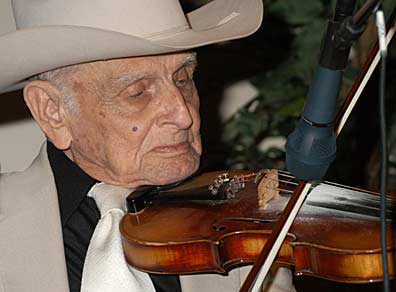 |
Rodney Fontenot in 2003Here are a few photos taken during Arrête Pas La Musique, a fundraiser for Louisiana Folk Roots and the Balfa Cajun and Creole Heritage Week planned for November 2003 at Chicot State Park near Ville Platte, where the fundraiser was held February 15, 2003. Performing with Tina Pilione on second fiddle, Rodney Fontenot showed his mastery of the old Cajun fiddle style that he first heard Dennis McGee play some 80 years ago. For more information, see the section below and to to Tina Pilione's Official Web Site. |
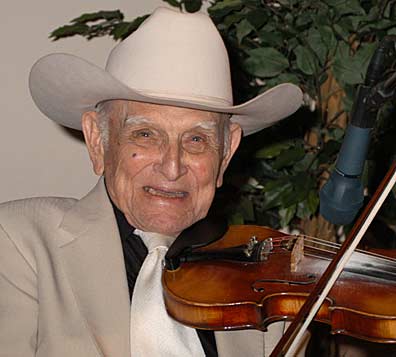 |
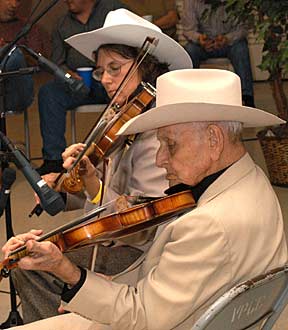 |
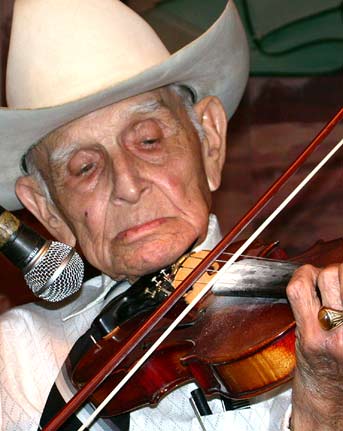
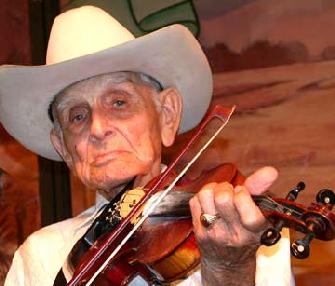
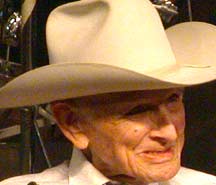
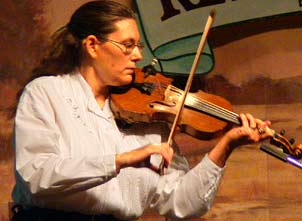
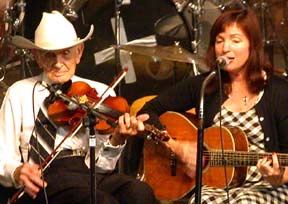
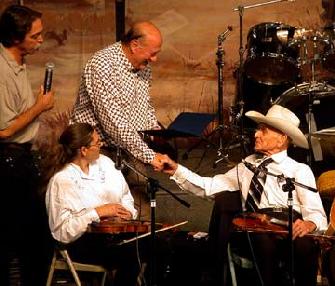
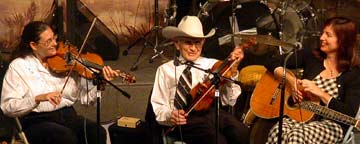
By then, Fontenot had given up playing the fiddle. According to Tina Pilione's liner notes to the CD, Fontenot was born in Chataignier in 1914. Because his father played second fiddle in Cajun bands, Fontenot was able to see Dennis McGee perform and at age 10 decided he wanted to play. When he was 15 he acquired his first fiddle. On the CD, you can listen to him explain to Tina Pilione in French how he traded a sack of potatoes with a man to get a fiddle that was worth $8. and the next year began to play dances. (We also get to hear Rodney's account of the financial arrangements when Joe Falcon, the first musician to record Cajun songs, played a dance in Chataignier.)
By 1936, in the middle of the Great Depression, Fontenot had given up fiddle playing in the struggle to make a living. By the early 1940s, he owned a filling station, a taxi service, and a dairy, plus he was raising and training horses as a sideline. He subsequently went into the real estate business. For nearly 50 years, he had no time to play the fiddle. But his love of the instrument and the music was always there.
Finally, after retiring from all of his other pursuits, Rodney Fontenot has returned to fiddling. As Pilione write, he "is a window into what Cajun music was in its original form." In his hands, his fiddle produces a sound that dates back to19th century or even earlier, back to the fiddling style of Dennis McGee, who himself first learned to play the fiddle from a man who was almost 100 years old and whose father may very well have been one of the original Acadians who came to Louisiana from Acadie in Canada.
According to Pilione, who has been studying Cajun fiddle styles for more than 20 years, the old style, as recorded by Dennis McGee in the 1920s and now heard again on a CD in the new millennium, is much more complex and difficult than the modern style: "It requires much study and practice to accomplish the more difficult bowing, fingering, notations and the unique structure of the tunes."
Pilione has herself put for the effort to learn the old style so that she plays second fiddle accompanying Rodney Fontenot typically by playing his melody and embellishments on the low strings. In addition to offering this explanation of Tina Pilione's achievement, Marc Savoy, in a section of the liner notes, also describes his admiration of Rodney Fontenot's music and the character of the people who played it: "Besides playing beautiful, soulful music, they had a gentleness and refinement about them that may never again grace this earth."
Most of the songs on the CD are Cajun standards, but, if all you have heard is contemporary Cajun bands playing this music, listening to Rodney Fontenot perform them will be almost like hearing them for the first time. Tina Pilione includes short notations for each song. The 13 songs are "Madame Young," "Bébé Creole," "One Step de Mamou," "Jolie Blonde," "Tante Aline," "Rodney Fontenot's Breakdown," "Courville and McGee Waltz," "Madame Etienne," "Happy One Step," "Valse de Cherokee," "Depuis l'Age de Quinze Ans," "Louisiana Waltz," and "Attrape Mon Chapeau."
The CD was recorded at Savoy Faire Studio with sound engineering by Joel Savoy.
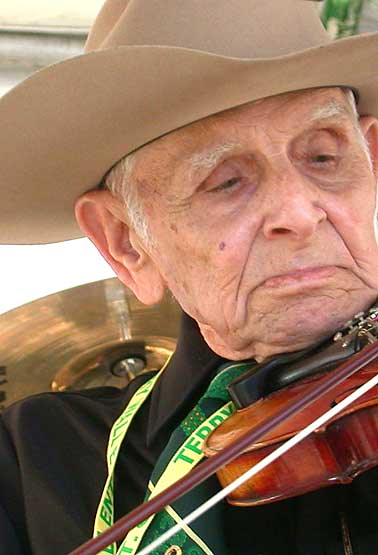
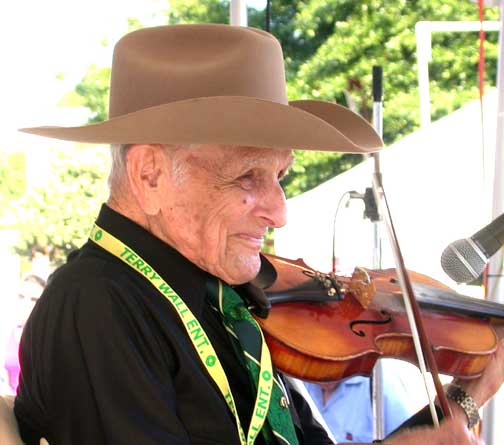
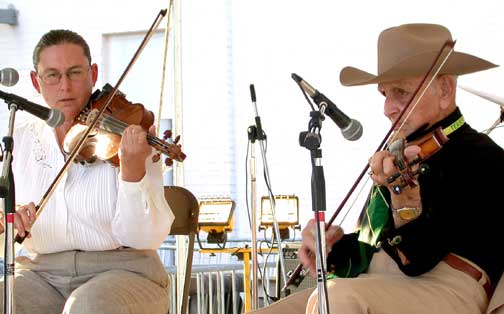
Posted 1-19-02; new photos added 6-3-02
All photographs and text by David Simpson.